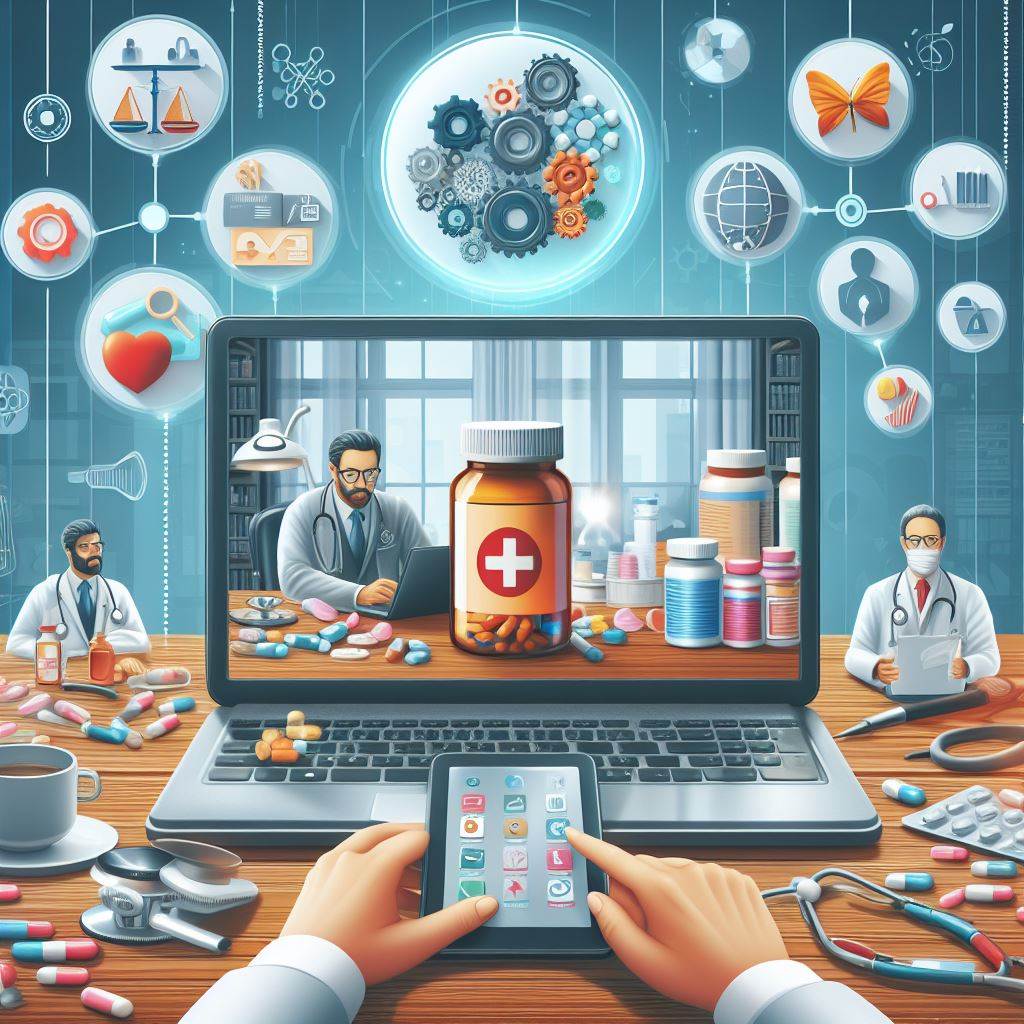Unlocking the Power of Digital: A Guide to Pharmaceutical Digital Marketing and Strategy in India – Brand Management 24

In today’s digital age, India stands at the forefront of innovation and transformation, redefining the landscape of marketing and branding with its unique stories of success. Let’s explore how digital marketing and strategy are shaping the Indian market and how can it be applied in pharma marketing and sales in India!
What is Digital Marketing?
Digital marketing in India is more than just advertising; it’s about storytelling, engagement, and connection.
Take the case of Amul, the iconic dairy brand. Through its witty and timely advertisements on social media platforms like Twitter and Instagram, Amul has not only entertained audiences but also stayed relevant in a rapidly evolving market.
Pharmaceutical companies can do something similar to spread the awareness of medical conditions like pre-diabetes or major depressive disorders.
What is a Digital Strategy in Marketing and Branding?

In India, digital strategy goes beyond traditional tactics to embrace the diversity and vibrancy of its culture. Zomato, India’s leading food delivery platform, exemplifies this approach. By leveraging user-generated content, targeted promotions, and a seamless mobile app experience, Zomato has become a household name, catering to the diverse tastes of millions across the country.
Something similar can be thought of keeping patients in the center to enhance adherence to therapy
Key Components of a Digital Strategy

1. Localized Content: Brands like Swiggy understand the importance of speaking the language of their audience. By curating content in regional languages and adapting to local preferences, Swiggy has captured the hearts (and appetites) of consumers across India.
There are definitely strategies companies marketing medical nutritional products in India can learn from Swiggy’s approach to create awareness among patients – like for example in building trust and authority.
Building credibility – Swiggy has partnered with reputable restaurants. Medical nutritional companies can emphasize collaborations with trusted healthcare professionals and institutions.
Transparency – Swiggy allows you to see reviews and ratings. Medical nutritional companies can provide detailed information on product ingredients, certifications, and clinical trials (if applicable) to build trust with patients.
2. Influencer Marketing: India’s influencer economy is booming, with influencers like comedian Bhuvan Bam and comedian Prajakta Koli commanding massive followings across social media platforms.
On similar lines medical nutrition companies can utilise key opinion leaders, dieticians or even senior nurses as social influencers.
3. E-commerce Innovation: With the rise of e-commerce giants like Flipkart and Amazon India, digital strategy in India is synonymous with innovation. From AI-powered recommendations to vernacular language support, these platforms are constantly pushing the boundaries to enhance the online shopping experience for Indian consumers.
Tata 1mg and Pharm Easy are doing this proficiently.
Are AI and Gen AI Components of Digital Marketing?
In India, AI is not just a buzzword; it’s a game-changer. BYJU’S, India’s largest edtech company, harnesses the power of AI to personalize learning experiences for students, making education more accessible and engaging than ever before.(before it fell into disrepute)
Pharma bodies like IPA and OPPI can certainly take lead in patient education and tackle conditions like IBS, or pre-diabetes or breast cancer.
Unlock the Power of Digital Marketing and Strategy in India for Patient Education!
Digital marketing offers a powerful arsenal for pharmaceutical companies to raise awareness and educate the public about medical conditions like Alzheimer’s disease, epilepsy, and major depressive disorders.
Here’s how pharma companies can leverage this strategy:
Content Marketing:
- Develop informative websites and blogs: Create high-quality content that explains the condition, its symptoms, diagnosis, and treatment options in a clear and accessible manner.
- Patient stories and testimonials: Feature real stories from patients and caregivers to create an emotional connection with the audience and highlight the impact of the condition.
- Leverage video content: Educational videos, animations, and explainer videos can effectively explain complex medical topics in an engaging way. Partner with patient advocacy groups or healthcare professionals to create these videos.
Social Media Marketing:
- Run targeted campaigns: Utilize social media platforms to reach specific demographics at risk for these conditions or those who might be caring for someone with the condition.
- Engage in discussions: Encourage conversation and answer questions on social media platforms. Partner with patient advocacy groups or healthcare professionals to host live Q&A sessions.
- Utilize social media influencers: Collaborate with relevant patient advocates, healthcare professionals, or even fitness influencers (for conditions like depression) to reach a wider audience and spread awareness.
Search Engine Marketing (SEM):
- SEO optimization: Optimize website content with relevant keywords to ensure patients searching for information can easily find your educational resources.
- Paid search advertising: Consider targeted pay-per-click (PPC) campaigns to direct users searching for information about these conditions to your educational resources.
Additional Strategies:
- Develop mobile apps: Create informative apps that provide patients and caregivers with resources, track symptoms, or offer medication reminders (ensure features comply with regulations).
- Collaborate with patient advocacy groups: Partner with these groups to develop educational content, co-host webinars, or participate in awareness campaigns.
- Interactive tools and quizzes: Create online quizzes or interactive tools to help people assess their risk factors or identify potential symptoms (be clear these are not diagnostic tools and emphasize consulting a doctor).
Important Considerations:
- Credibility and Transparency: Ensure all information is medically accurate, up-to-date, and cites credible sources.
- Regulations: Adhere to strict advertising regulations governing pharmaceutical marketing.
- Focus on education, not promotion: The primary goal should be to educate the public, not directly promote specific medications. However, you can subtly mention treatment options exist and emphasize consulting a healthcare professional for diagnosis and treatment plans.
By implementing a comprehensive digital marketing strategy that prioritizes education and empowers patients, pharmaceutical companies can play a valuable role in raising awareness about critical medical conditions. From the bustling streets of Mumbai to the serene valleys of Himachal, digital marketing and strategy are reshaping the Indian market in unprecedented ways. Whether you’re a homegrown startup or a multinational corporation, embracing the power of digital is key to unlocking new opportunities and driving meaningful impact in the diverse tapestry of India.
#DigitalIndia #DigitalMarketing #UnlockDigitalPower
Wonderful dissection of the possibilities and opportunities.
Unfortunately Indian Pharma is yet able to look beyond Dr engagement and ROI in the short run.
Thank you Bhavesh
Very insightful and helpful.
Thank you Prashant!
Digital Strategy in Marketing and Branding has been wonderfully covered .
Selling still requires soft skills inclinic and that is the Main difference.
Phygital is way ahead atleast this decade unless another new disruption comes
Yes Debashishda. Completely agree with you. Soft skill are even more important than hard skills
A comprehensive write up on digital marketing. Will help many, like me. Icing on the cake is “Focus on education not promotion”. Thank you
Thank you Sanat Kumar, that you liked it